 |
by Hayden Field on (#6XXKA)
"This is absurd." That's all Amba Kak, co-executive director of the AI Now Institute, recalls thinking when she first heard about the proposed moratorium on state AI regulation tucked into President Donald Trump's "big, beautiful bill" - the same funding bill that had Trump and Elon Musk recently trading barbs online. According to the bill's [...]
|
The Verge
| Link | https://www.theverge.com/ |
| Feed | http://www.theverge.com/rss/index.xml |
| Updated | 2025-12-24 14:47 |
 |
by Ash Parrish on (#6XXK9)
Capcom had an interesting showing at Summer Game Fest with three titles that will carry the developer into 2026 and beyond: Onimusha: Way of the Sword, Resident Evil Requiem, and Pragmata. I got hands-on previews with both Requiem and Pragmata, and a hands-off presentation for Onimusha. Across the three games, I saw a mix of [...]
|
 |
by Emma Roth on (#6XXFR)
President Donald Trump says he has reached a deal with China that will ensure the US receives rare earth materials, keeps tariffs at a total of 55 percent, and allows American universities to keep accepting Chinese students. Trump announced the news of the agreement on Truth Social, which he says is still subject to final [...]
|
 |
by Jennifer Pattison Tuohy on (#6XXFS)
I am an excellent home cook, if I do say so myself. I regularly produce restaurant-quality dishes from my smart kitchen. But I have two favorite dishes I've never mastered at home: pizza and burgers. Yes, I can make them, but do they taste as good as my local burger or pizza joint? Nope. Naturally, [...]
|
 |
by Charles Pulliam-Moore on (#6XXFT)
The first teaser for season 3 of Apple TV Plus' Foundation hinted at some of the changes coming with the series' massive timeskip. But the show's latest trailer really hammers how much wilder this story is about to get. Though Foundations third season jumps 152 years into the future and picks up at a time [...]
|
 |
by David Pierce on (#6XXFV)
Dia, the new browser from The Browser Company, is almost nothing like the company's last product. That app, Arc, was a total rethink of how browsers work: it moved tabs to the side and combined them with bookmarks, it offered endless ways to organize all your stuff, and it had lots of ideas about how [...]
|
 |
by Victoria Song on (#6XXFX)
For several months, my Slack avatar was a screenshot of my incredibly cursed Vision Pro persona. My virtual avatar's head was cocked back, cackling into the pixelated void, her hair one solid unmoving block. It wasn't good - but it also wasn't the end of the world. Everyone else's Persona looked just as horrible, and [...]
|
 |
by Andru Marino on (#6XXFW)
Nintendo introduced a new hardware button to the Switch 2 specifically for chatting with your friends, and it's undoubtedly my favorite feature on the console. Instead of using a smartphone app like the original Switch, Switch 2 users can open up a communications channel at any time with the "C" button and chat with friends, [...]
|
 |
by Dominic Preston on (#6XXCR)
Huawei has just announced the Chinese launch of its Pura 80 flagship phones, and the Ultra comes with a clever trick: a switchable" dual-lens telephoto camera that allows two different lenses to share the same sensor. You can see both lenses side-by-side in the largest of the three camera rings on the 80 Ultra's rear, [...]
|
 |
by Emma Roth on (#6XXCS)
HP has become the first company to preview hardware built with Google Beam, the 3D video communication technology formerly known as Project Starline. It's launching the HP Dimension, a device that features a 65-inch light field display with six high-speed cameras inside the bezel to create a true-to-life" 3D video of your caller. Google first [...]
|
 |
by Tom Warren on (#6XXCT)
Nintendo was expecting the Switch 2 would be just as successful as the original, and it's already become the fastest-selling game console of all time after a strong launch. Nintendo revealed today that it has sold more than 3.5 million Switch 2 units in the console's first four days, surpassing records for any of Nintendo's [...]
|
 |
by Jess Weatherbed on (#6XXAM)
Amazon is making it easier for sellers to quickly create generative AI ads on its platform, sometimes with just a single click. Amazon Ad's Video Generator, a free advertising tool introduced in beta last year, now has some new tricks and is generally available for sellers in the US to create photorealistic video assets" in [...]
|
 |
by Dominic Preston on (#6XX8W)
Samsung's latest smart fridges now support multi-voice recognition powered by the company's Bixby assistant, which can be used to bring up personalized information on the built-in smart displays based upon which member of a household is speaking. Voice identification in smart home tech is nothing new, but with no successful Samsung-branded smart speaker line of [...]
|
 |
by Tim Stevens on (#6XX8X)
There's a fight for control going on inside the cockpits of many modern cars. Enable all the active safety systems in a Tesla, and it'll do most of the steering for you. But if it makes an errant turn or meanders a little too far this way or that in the lane (and trust me, [...]
|
 |
by Andrew Liszewski on (#6XX79)
Logitech has announced a new keyboard case for iPad Pro and iPad Air models that lets you remove and position its keyboard exactly where you need it. It's not an entirely new idea for the company - its Combo Touch case also lets you detach the keyboard - but the new Flip Folio's keyboard has [...]
|
 |
by Jay Peters on (#6XX2A)
In March, Apple delayed its upgraded Siri, saying that it's going to take us longer than we thought to deliver" the promised features. At WWDC this week, Apple's SVP of software Craig Federighi and SVP of worldwide marketing Greg Joswiak shared more details about the decision to delay in an interview with The Wall Street [...]
|
 |
by Jess Weatherbed on (#6XWDH)
OpenAI's ChatGPT service was down all day for many users after the platform started experiencing performance issues on Tuesday morning. The chatbot responded with a Hmm...something seems to have gone wrong" error message to my colleague after failing to load, and users across X and Reddit are reporting platform outages. Downdetector showed that issues started [...]
|
 |
by Antonio G. Di Benedetto on (#6XX2B)
At WWDC, Apple announced its new Liquid Glass design language, which is coming to all of its devices, including Macs. I've been tinkering with the macOS Tahoe 26 developer beta on the M4 MacBook Air for about a day. So far, the aesthetic changes range from slick to slightly overwrought, but the new Spotlight search [...]
|
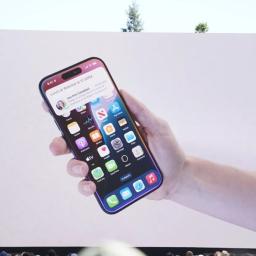 |
by Hayden Field on (#6XW3C)
Apple's WWDC 2025 had new software, Formula 1 references, and a piano man crooning the text of different app reviews. But one key feature got the short end of the stick: Siri. Although the company continuously referenced Apple Intelligence and pushed new features like live translation for Messages, FaceTime, and phone calls, Apple's AI assistant [...]
|
 |
by Jay Peters on (#6XX13)
OpenAI CEO Sam Altman, in a blog post published Tuesday, says an average ChatGPT query uses about 0.000085 gallons of water, or roughly one fifteenth of a teaspoon." He made the claim as part of a broader post on his predictions about how AI will change the world. People are often curious about how much [...]
|
 |
by Emma Roth on (#6XX14)
Google rolled out a bunch of new features with Android 16 on Tuesday, but the company appears to be saving its big Material 3 Expressive redesign for a future update. The update doesn't feature the design language's revamped elements, and a source tells Android Authority's Mishaal Rahman that Google is planning to launch the new [...]
|
 |
by Alex Heath on (#6XX15)
Google is starting to offer buyouts to US-based employees in its sprawling Search organization, along with other divisions like marketing, research, and core engineering, according to multiple employees familiar with the matter. The buyouts, which Google is referring to as a "voluntary exit program," are currently not being offered to employees in DeepMind, Google Cloud, [...]
|
 |
by Jennifer Pattison Tuohy on (#6XWZ0)
While a smarter Siri may have been a no-show at WWDC, Alexa Plus, the generative AI-powered overhaul of Amazon's voice assistant, is finally appearing in the wild. No one at The Verge has access yet, but Amazon spokesperson Eric Sveum tells me over a million people now do - up from hundreds of thousands" just [...]
|
 |
by Ash Parrish on (#6XWZ1)
There's a line in showbiz that goes, "There's no such thing as bad publicity." Ian Proulx, CEO of Splitgate 2 developer 1047 Games, has recently learned the hard way that's not entirely true. Last week, during the Summer Game Fest keynote livestream, Proulx came out to promote his game wearing a black hat that read [...]
|
 |
by Cameron Faulkner on (#6XWZ2)
Google has launched a bevy of noteworthy additions to its Home app, most of which are available now in public preview (which you can enroll in here). The biggest news, according to The Verge's smart home expert Jen Tuohy, is that picture-in-picture support has arrived for Nest Cams on whichever Google TV product you might [...]
|
 |
by Jay Peters on (#6XWZ3)
Nothing's next major phone is going to be revealed next month, but it might be missing the company's signature Glyph lights. Leaker Max Jambor shared a picture of what he says is the Nothing Phone 3, and the image doesn't appear to include Glyph lights, which Nothing has offered on previous phones as a way [...]
|
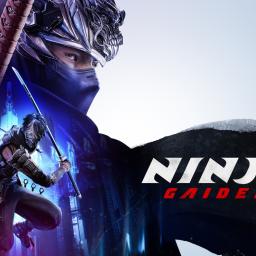 |
by Ash Parrish on (#6XWWD)
Ninja Gaiden 4 was one of several games that Xbox showed off in its games showcase over the weekend. And during its Summer Game Fest-adjacent in-person preview event, I got the chance to play it for myself. I've never played Ninja Gaiden before and was skeptical that the game's generic dark aesthetic, which feels straight [...]
|
 |
by Jess Weatherbed on (#6XWWF)
Google is rolling out a new feature to Pixel devices that makes it easier to connect with people you're close to. Pixel VIPs is a new widget that builds on the favorite contacts already saved to Pixel phones, allowing users to add personal notes about them, see real-time location information when shared, and quickly check [...]
|
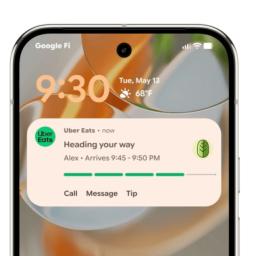 |
by Emma Roth on (#6XWWE)
Android 16 is officially here, and it includes Google's take on the iPhone's Live Activities. On Tuesday, Google announced that Live Updates are rolling out first with ride-share and food delivery apps, allowing you to track the progress of your ride or delivery with persistent, real-time notifications. Google first started working on Live Updates last [...]
|
 |
by Sheena Vasani on (#6XWWG)
Father's Day is on Sunday, June 15th, and if you're after a last-minute gift that won't blow your budget, we've got you covered. Several retailers are currently offering fantastic Father's Day discounts on an array of gadgets we can personally vouch for at The Verge, from the Roomba Combo 10 Max to budget-friendly options like [...]
|
 |
by Jay Peters on (#6XWSA)
Apple's next major software updates are getting a huge new feature for playback speed sickos like me: you'll be able to listen to shows on the Podcasts app at as much as 3x speed, Apple notes in a press release about new services features. Previously, the maximum was 2x. You can move to super speed [...]
|
 |
by Cameron Faulkner on (#6XWSB)
The new $84.99 Pro Controller for the Switch 2 may not be your idea of a pro-grade controller - perhaps not by a long shot. But it's certainly more of one than Nintendo's $69.99 last-gen controller. It has two extra buttons embedded into its grips (one on each side), which can be programmed on a [...]
|
 |
by Andrew Liszewski on (#6XWSC)
Sonos has released a major software update for its Ace wireless headphones bringing performance improvements and a feature that was supposed to originally be available late last year. TrueCinema mode, which adapts the headphone's spatial audio to your space and makes the virtual surround sound effect more convincing, is finally available, as spotted by What [...]
|
 |
by Alex Heath on (#6XWSD)
Snap plans to start selling its first pair of augmented reality glasses to the public in 2026. The coming release is part of CEO Evan Spiegel's decade-plus bet on what comes after the smartphone. He teased it Tuesday onstage at the Augmented World Expo, an augmented and virtual reality developer conference in Long Beach, California. [...]
|
 |
by Andrew Webster on (#6XWSE)
All sequels have to live up to their predecessors in some form, but few have as daunting a task as Mario Kart World. It's a follow-up to the best-selling game across Nintendo's last two console generations, and a game that eventually doubled in size thanks to an ambitious array of downloadable add-ons. So instead of [...]
|
 |
by Lauren Feiner on (#6XWSF)
The Trump administration is working on an AI.gov" website and API to accelerate government innovation with AI," 404 Media found based on code posted to Github and an early version of the site. The project appears to be run by the General Services Administration's Technology Transformation Services, led by former Tesla engineer Thomas Shedd. Shedd, [...]
|
 |
by Hayden Field on (#6XWSG)
Meta is close to finalizing an almost $15 billion investment in Scale AI, the tech giant's largest-ever external investment, which would give Meta a 49% stake in the company, according to The Information. As part of the deal, Meta CEO Mark Zuckerberg is personally assembling a team of about 50 people to help Meta supercharge [...]
|
 |
by Jess Weatherbed on (#6XWNR)
Threads users will soon be able to send direct messages to each other without having to leave the platform. Meta CEO Mark Zuckerberg announced on June 10th that Threads will start testing its own DM system this week, starting in Hong Kong, Thailand, and Argentina, with plans to expand to more locations soon." The experiment [...]
|
 |
by Andrew J. Hawkins on (#6XWNS)
Things are getting nutty in the world of vehicle fuel economy standards. Last week, Transportation Secretary (and ex-reality TV contestant) Sean Duffy declared that he was resetting the Corporate Average Fuel Economy (CAFE) standards that govern vehicle fuel efficiency in the US. Duffy confidently declared that the current CAFE standards, in which fuel economy would [...]
|
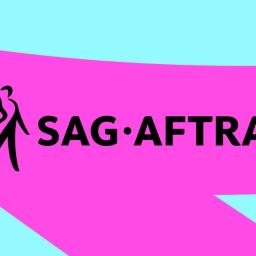 |
by Jess Weatherbed on (#6XWNT)
American Screen Actors Guild members have reached a tentative" contract agreement with major gaming companies that could potentially end the 11-month-long video game actors' strike. SAG-AFTRA announced the tentative contract on Monday without specifying terms or protections for performers. The strike began on July 26th, 2024, after the union and a bargaining committee of video [...]
|
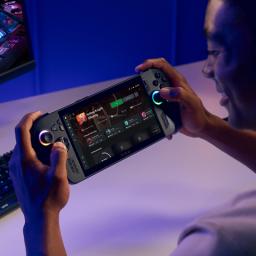 |
by Ash Parrish on (#6XWNV)
Xbox has revealed its new handheld line, the ROG Xbox Ally and the Ally X, made in partnership with Asus. And I got the chance to play it during Summer Game Fest. My colleague Tom Warren has already broken down how the handheld works with its operating system, UI, and integration with the Xbox app [...]
|
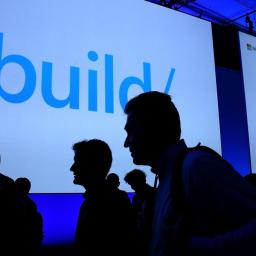 |
by Tom Warren on (#6XWNW)
Microsoft isn't planning to host its Build developer conference in its home city of Seattle next year. The conference is being relocated, and Microsoft has reportedly canceled all its holds for Build at the Seattle convention center for all future years." Our plans for Build 2026 have changed, but our vision to empower builders and [...]
|
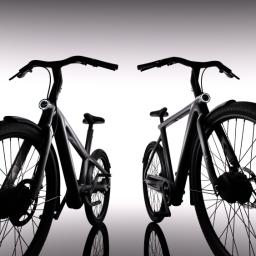 |
by Thomas Ricker on (#6XWNX)
VanMoof, the poster child of bikeaggedon, just launched the first e-bikes developed under new leadership following its 2023 bankruptcy sale to McLaren Applied. The bikes were supposed to be revealed tomorrow, but a link provided to an early access program has resulted in the details leaking early. The new S6 Series - which I briefly [...]
|
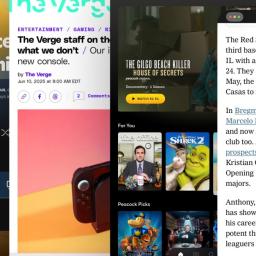 |
by David Pierce on (#6XWJT)
I genuinely never expected to say this: it appears Apple finally figured out multitasking on the iPad. With iPadOS 26, the company hasn't completely taken off the guardrails for how you can use and place apps on your tablet, but it came awfully close. With a couple of clever iPad-specific tricks, and better support for [...]
|
 |
by Andrew Webster on (#6XWJV)
The squid kids are coming to the Switch 2. In its mobile news app today, Nintendo made some surprise announcements about its ink-shooting franchise. First up, a spinoff game called Splatoon Raiders is in the works for the Switch 2, though there aren't a lot of details. The new game will take players to an [...]
|
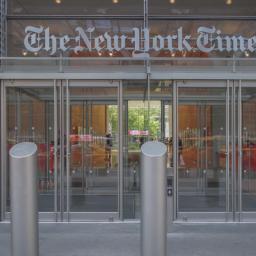 |
by Jay Peters on (#6XWJW)
The New York Times' games team is trying something new: it's about to start testing a Scrabble-like game it calls Crossplay, but instead of folding the game into the main NYT Games app, Crossplay will be a standalone app. The game is soft launching in New Zealand on iOS on June 10th. I was recently [...]
|
 |
by Tom Warren on (#6XWJX)
Microsoft has started testing a new feature for its Edge browser that adds an AI-powered search to browsing history. This new enhanced search" feature lets you find websites in your browser history even if you use a phrase, synonym, or even a typo that's similar to the site you actually want to find. The AI-powered [...]
|
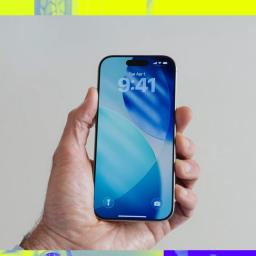 |
by David Pierce on (#6XWJY)
The tech world is full of cycles. Things are always bundling and unbundling, going from minimalist to maximalist, embracing nostalgia before diving head-first into the future. And right now, it appears, we're doing glassy again. On this episode of The Vergecast, Nilay and David are joined by The Verge's Allison Johnson and Victoria Song to [...]
|
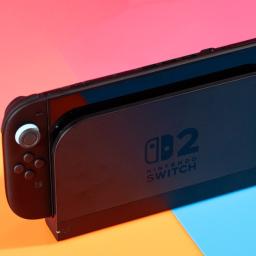 |
by The Verge on (#6XWG4)
The Nintendo Switch 2 is finally, officially out, and Verge staffers have spent a bunch of time playing with it. The new console has a lot of improvements, like a bigger screen and an extra USB-C port. There's a bunch of games to play, too, including a new Mario Kart and nice updates to older [...]
|
 |
by Jess Weatherbed on (#6XWG5)
After two years as an iPhone exclusive, Apple's Journal app will soon be available on Mac and iPad. Apple announced at WWDC on Monday that its latest macOS 26 and iPadOS 26 updates will support the Journal app, which helps users track their daily activities and experiences with images, videos, and voice memos. Journal comes [...]
|